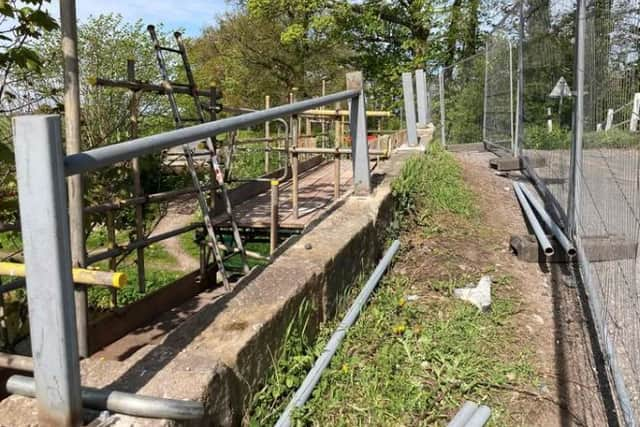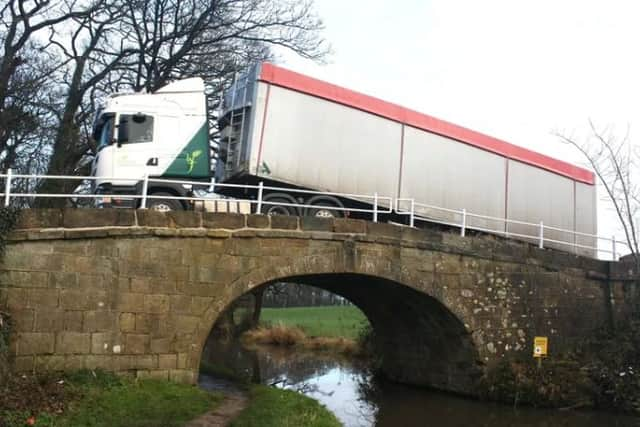How AI cameras are going to capture careless motorists causing bridge strikes on the Lancaster Canal
and live on Freeview channel 276
An innovative artificial intelligence (AI) CCTV system is being trialled on the Lancaster Canal to catch careless hit-and-run motorists, who cause thousands of pounds worth of damage each year.
As well as inconvenience to local residents and boaters, vehicle strikes on 200-year-old stone bridges cost annually up to £1 million in repairs, diverting vital funds away from work to conserve waterways.
How does it work?
Advertisement
Hide AdAdvertisement
Hide AdThe Canal and Rivers Trust which cares for 2,800 historical bridges across 2,000 miles of canals, will be testing the new system on Cockerham Road Bridge (no 79), near Forton, which was hit twice in 2022. In the past, the use of CCTV to providing constant recording of bridge strike hot spots in rural areas has proved prohibitively expensive due to a lack of power supply.


But this new system is controlled by AI using a mobile phone signal and doesn’t continuously record ,but takes a few photos when it detects vehicle movement. The AI then assesses if the bridge has been impacted. If there is no strike, the photos are deleted and if damage has been caused, Trust staff receive a notification, allowing them to identify number plates to track down the offenders and claim full repair costs on their insurance.
Last summer Cockerham Road Bridge had to be repaired after yet another strike, at a cost of £25,000. The full-length white steel railings on the top of the stone parapet were also damaged and, in another innovation, have been replaced in sections, leaning away from the road to minimise the risk and make future accident repairs cheaper.
Why pick the Lancaster Canal?
Advertisement
Hide AdAdvertisement
Hide AdAndy Dobson, Trust asset engineer, said: “Hump-back bridges, an iconic part of Britain’s canal network, were built for the passage of horse-drawn carts, not for today’s modern vehicles and HGVs. Due to the large number of rural, narrow roads crossing the Lancaster Canal, it has more bridge strikes than any other. The bridges are part of the canal’s special character and heritage, and each time one is hit a small piece of history is lost.


“The canal bridges in this area are of particular interest, as their stone parapets were lowered and replaced with railings in the Second World War to deny shelter to invading enemy tanks and troops. Lancashire’s gently shelving beaches were considered a perfect spot for a large invasion force to land.
“With all this wonderful heritage to protect, the Trust’s asset team has worked hard to think of innovative ways not only to reduce repair costs but also to prevent strikes from happening in the first place. We desperately need motorists to slow down and take more care. We are grateful to Lancashire County Council who have been working with us over the last two years to install better approach signage to 15 at-risk bridges over the Lancaster Canal. Hopefully the combination of all these innovations will mean our precious historic canal bridges will be preserved for future generations."
Comment Guidelines
National World encourages reader discussion on our stories. User feedback, insights and back-and-forth exchanges add a rich layer of context to reporting. Please review our Community Guidelines before commenting.